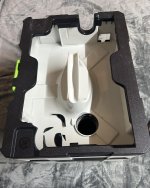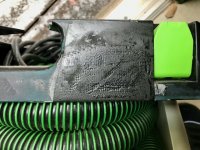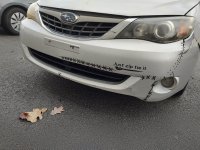rst said:
Having 45 years of plastic fab experience, I recommend regular modelling glue. It is thickened acetone. I have a plastic welder but I would never use it to repair such thin material. I would glue a patch over the break to strengthen it, not just relying on joining the piece. The other alternative is MEK, but that is nasty stuff.
This ^^^^^^^ ABS is readily soluble in organic chemical compounds known as 'ketones'. Acetone is a ketone. MEK - Methyl Ethyl Ketone. That's why an acetone solvent-weld works, that's why it's worked on the numerous repairs I've done, and why those (mostly self-inflicted and 'what was I thinking?) repairs are still as strong as original solid material many years down the line.
Every question on this forum is almost always met with a flood of incredibly well-meaning replies which are all honestly posted in great spirit, and which are all posted to be as helpful as possible to the OP. That's the guys we are. But just a few posts in - I've read posts about vinyl weld primers, ABS welding rods, staples, sonic welders, various commercial repair products, stitching with accompanying hole-drilling and dental floss, conspiracy theories about Festool's suppliers cheating on them and faking plastic specifications, melting plastic with soldering irons, the addition of wire, just all sorts - but all genuinely contributed in an effort to help a buddy out. There's absolutely nothing wrong with any of that, and bless the kind hearts of those who've contributed their solutions.
But the OP is a poor guy looking for a quick and reliable fix on a few tiny broken pieces back onto a small corner of a Sys3-sized extractor. We're not talking Golden-Gate-Bridge-Major-Structural-Repairs here.
So my take and my final contribution? I've done half a dozen fixes on my broken Systainers with acetone, with 100% successful long-term results. I'm no ABS guru who knows everything (nor would I ever claim to be) - but in my experience, there's absolutely no need for any of the above (100% well-meaning) over-thinking or over-complication. Solvent-weld it with acetone. Simple fixes are often the best, the cheapest, and the quickest.
And to the OP - I hope you get fixed up.
Kevin
 View attachment 1
View attachment 1



